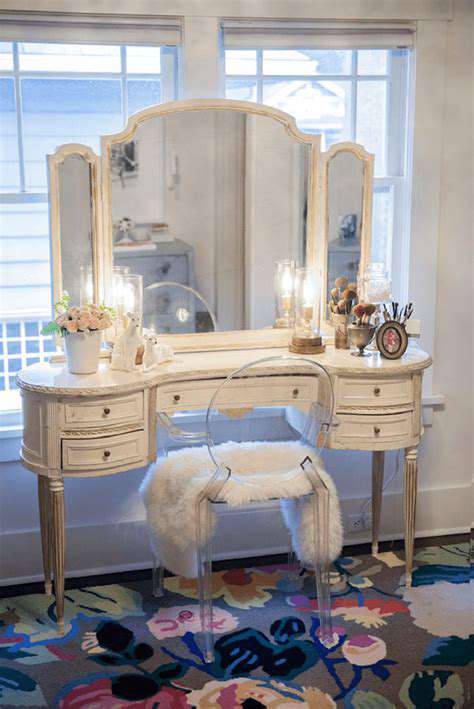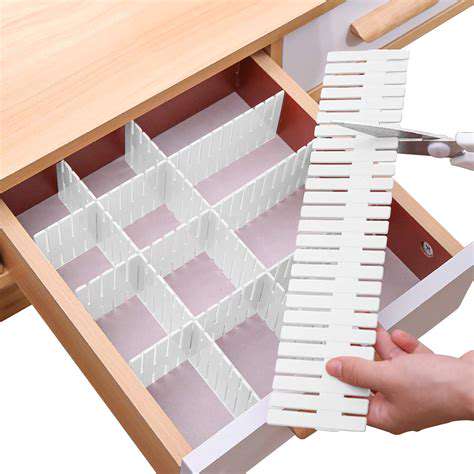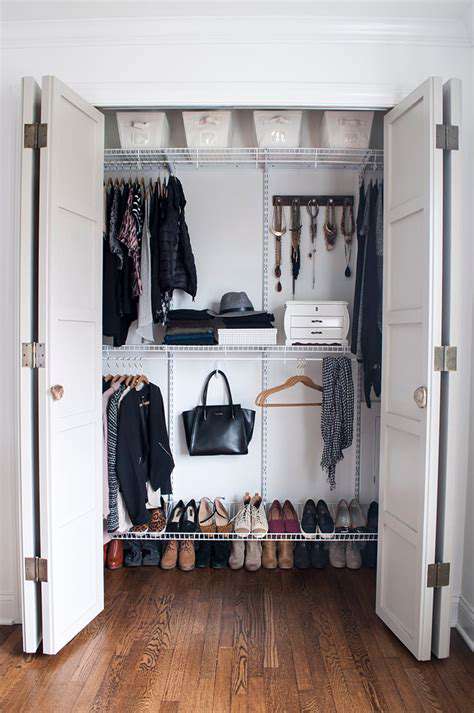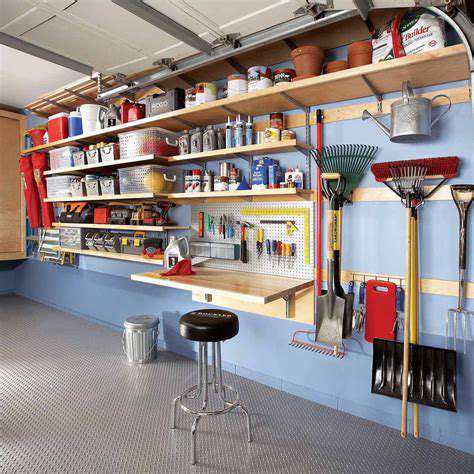Guide to Organizing Your Makeup Collection
Identifying Your Makeup Needs
Before tackling decluttering, take a hard look at your actual makeup usage. Do you really need twelve shades of nude lipstick when you only wear three regularly? That glitter eyeshadow from 2018? Probably time to let it go. This process isn't about deprivation - it's about creating a curated collection that reflects your current style and needs. Professional organizers suggest this honest assessment prevents future impulse buys and saves money.
Here's a reality check: most people use 20% of their makeup 80% of the time. That expensive highlighter you used once for a photoshoot? It's likely collecting dust. By focusing on what you actually use, you'll save time during your morning routine and reduce decision fatigue. This approach mirrors the capsule wardrobe concept but for your beauty products.
Categorizing and Grouping Your Makeup
After the initial purge, the real organization begins. Try this: lay everything out on a clean surface and group by category. Eyeshadows with eyeshadows, lip products together, face products in their own pile. This visual representation often reveals surprising duplicates or gaps in your collection. You might discover you own five nearly identical pink blushes or realize you're missing a good neutral eyeshadow palette.
For maximum efficiency, consider sub-categorizing. Within lip products, separate bullets from liquids. In eyeshadows, divide by color family or finish. This level of organization means you'll never waste time searching for that perfect mauve lipstick again. It also helps identify what formulas you truly prefer - maybe you gravitate toward cream blushes over powders, for instance.
Discarding Unused or Expired Products
Here's the uncomfortable truth: makeup expires. That mascara you've had since last summer? Toss it. Liquid products like foundations and cream blushes typically last 6-12 months, while powders may last 2-3 years. Using expired products can lead to skin irritation or infections - not worth the risk. Check for changes in texture, smell, or color as these indicate spoilage.
For products that aren't expired but never get used, implement the six month rule. If you haven't touched it in half a year, it's time to say goodbye. Be ruthless - that limited edition highlighter isn't doing you any favors sitting untouched in your drawer. Consider donating unopened products to women's shelters or recycling programs for used makeup containers.
Choosing the Right Storage Solutions
Now for the fun part - selecting storage that works for your space and habits. Small apartment? Try stackable acrylic organizers. Have a large collection? A rolling cart with drawers might be ideal. The key is matching your storage to both your collection size and your daily routine. If you do your makeup at a vanity, open-top organizers work well. For bathroom storage, look for water-resistant options.
Pro tip: clear containers let you see everything at a glance, preventing the out of sight, out of mind phenomenon. Group like items together in designated spaces - all eyeliners in one cup, brushes in another. This system makes it obvious when you're running low on essentials or when a category is getting overcrowded.
Maintaining a Decluttered Makeup Routine
The secret to lasting organization? Regular maintenance. Set a quarterly makeup audit in your calendar to reassess your collection. This prevents the slow creep of clutter and keeps your routine efficient. Use these check-ins to clean your brushes, wipe down containers, and discard anything past its prime.
Develop the habit of putting products back in their designated spots immediately after use. This simple practice maintains order and prevents the frustrating where did I put that? scramble. Over time, this becomes second nature, transforming your makeup routine from chaotic to calm.
Categorizing Your Makeup: A System for Success
Understanding Your Current Collection
Before creating categories, you need to know what you're working with. Pull everything out and make notes. You'll likely find surprises - products you forgot you owned or duplicates you didn't realize you'd purchased. This process helps identify your true preferences versus impulse buys.
Ask yourself key questions: What shades do you actually wear? What formulas work best with your skin type? This awareness helps create categories that reflect your real-life usage rather than aspirational makeup habits. You might realize you prefer cream products over powders, or that certain colors consistently flatter your complexion.
Organizing by Product Type
The most straightforward system groups items by their function. All foundations together, concealers in their own section, eye products separate from lip products. This method works well for those who prefer simplicity and quick access. Within each category, you can then organize by frequency of use - daily essentials up front, special occasion items in back.
For larger collections, add subcategories. In lip products, separate bullets, liquids, and balms. For eyeshadows, divide by singles versus palettes. This granular approach saves time when you're searching for something specific. It also helps prevent purchasing duplicates since you can easily see what you already own.
Color-Coded Categorization
Visual organizers will love this approach. Assign colors to categories - perhaps blue for eye products, pink for lips, green for face products. This creates an intuitive system where you can grab what you need at a glance. Use colored stickers, washi tape, or even different colored containers to implement this.
Take it further by organizing within categories by color. Arrange lipsticks from light to dark, or group eyeshadows by color family. This makes creating cohesive looks effortless and helps identify gaps in your color range. You might notice you have ten red lipsticks but no true berries, for example.
Categorizing by Occasion
For those with varied makeup needs, organizing by occasion can be transformative. Create sections for: everyday work makeup, weekend casual, evening/special events. This streamlines your routine based on what you're doing that day. Keep your work-appropriate products separate from bold evening looks.
This method works particularly well for people who wear dramatically different makeup for different settings. It prevents the frustration of digging through bold colors when you just need neutral office-appropriate shades. Consider labeling sections clearly so you or others can easily find what's needed.
Seasonal Categorization
Your makeup needs change with the seasons - and so should your organization. Rotate products based on the time of year. Store winter's deeper shades when spring arrives, making room for fresh, bright colors. This prevents overcrowding and keeps your current-season favorites easily accessible.
This approach works especially well for complexion products that might change with your skin tone through the year. It also helps you actually use those summer bronzers or winter berry shades when they're seasonally appropriate. Consider using labeled bins or a separate drawer for off-season storage.
Utilizing Makeup Storage Solutions: Maximizing Space and Functionality
Maximizing Drawer Space
Drawer dividers are a game-changer for makeup storage. Interior designers recommend customizing compartments to your specific collection. Measure your drawer first, then look for adjustable dividers that can grow with your changing needs. This prevents the dreaded junk drawer effect where everything gets tossed in haphazardly.
Think vertically within drawers. Stack items where possible, with daily-use products on top. Use shallow trays for smaller items like lip liners or single shadows to prevent them from getting lost. For palettes, store them vertically like books for easy browsing. This approach can often double your usable drawer space.
Optimizing Countertop Space
For those who prefer having products at arm's reach, countertop organization is key. Choose organizers with multiple tiers to take advantage of vertical space without creating visual clutter. Look for designs with a mix of open and closed storage to balance accessibility with tidiness.
Keep only daily essentials on the counter. That limited edition highlighter you use twice a year? It can live elsewhere. Rotate seasonal favorites to the prime real estate of your countertop. This keeps your space functional rather than overwhelming.
Utilizing Vertical Space
Walls offer often-overlooked storage potential. Magnetic strips can hold metal pans of eyeshadow or makeup tools. Pegboards with small bins work well for frequently used items. Even simple wall-mounted shelves can display pretty palettes while keeping them accessible.
For small spaces, look up. Over-the-door organizers can hold dozens of products without taking up floor or counter space. Just be mindful of weight limits and ensure secure mounting to prevent accidents. This approach works particularly well in rental spaces where permanent modifications aren't possible.
Effective organization saves precious time in your daily routine. When everything has its place, you spend less time searching and more time creating looks you love. This principle applies beyond makeup to all areas of life.
Creating a Dedicated Makeup Area: A Space for Beauty

Planning Your Space
Your makeup area should work with your lifestyle, not against it. Space planning experts emphasize measuring before purchasing any furniture. A too-large vanity in a small bedroom creates frustration, while a tiny table won't accommodate your needs. Consider traffic flow - can you easily access the space without moving other furniture?
Think about your routine. Do you sit to apply makeup or prefer standing? This determines whether you need a chair or can use wall-mounted storage. Also consider electrical access if you use heated tools or special lighting. These practical considerations make the difference between a pretty space and a functional one.
Choosing the Right Location
Natural light is ideal for makeup application, but not always practical. If possible, position your space near a window but avoid direct sunlight which can distort colors. For windowless areas, invest in daylight-balanced bulbs that mimic natural light.
Consider convenience. A makeup area near your clothing storage makes getting dressed seamless. If you do skincare before makeup, position it near your bathroom. The goal is creating a logical flow to your getting-ready routine.
Essential Furniture and Accessories
Your vanity or table should offer both surface area and storage. Look for designs with drawers or shelves built in to minimize additional furniture. The mirror is arguably the most important element - consider one with adjustable lighting or magnification for precision work.
Don't overlook seating. An uncomfortable stool will make your routine feel like a chore. If space allows, choose a chair with back support. For small areas, look for stools that tuck completely under the table when not in use.
Organizing Your Products
Keep your most-used products most accessible. That foundation you wear daily deserves prime real estate, while special occasion glitter can live further away. Use drawer organizers that fit your specific products - no more rattling lipsticks or toppling eyeshadow palettes.
Consider frequency of use when assigning locations. Daily essentials should be easiest to reach, weekly products within arm's reach, and seasonal or special items can require slightly more effort. This tiered approach prevents overcrowding of your main workspace.
Lighting for Optimal Application
The right lighting prevents makeup mishaps. Avoid yellow-toned bulbs that distort color - look for daylight or cool white options around 5000K. Position lights at eye level to prevent shadows. For precision work, add a magnifying mirror with its own light source.
Lighting should be bright but not harsh. Dimmable options allow adjustment based on time of day or task. If possible, install lighting on both sides of your mirror rather than just overhead to eliminate unflattering shadows.
Maintaining Your Space
A clean makeup area is more hygienic and pleasant to use. Schedule weekly wipe-downs of surfaces and monthly deep cleans of containers and organizers. Keep disinfecting wipes handy for quick cleanups of spills or powder fallout.
Rotate products seasonally to keep your space current. This is the perfect time to check expiration dates and discard anything past its prime. A well-maintained space makes your routine feel luxurious rather than chaotic.
Maintaining Your Organized Collection: A Long-Term Strategy

Organizing Your Collection: A Foundation
Organization isn't a one-time project but an ongoing practice. The system you create should evolve with your changing needs and preferences. What worked when you had ten lipsticks may not suffice when you have thirty. Be willing to adjust your approach as your collection grows or your habits change.
Labeling is key for maintenance. Clear labels prevent the I'll remember where this goes trap that leads to disorganization. This is especially important if others might access your makeup area. A well-labeled system maintains itself even when you're in a hurry.
Inventory Management: Tracking Your Treasures
A simple spreadsheet can prevent duplicate purchases. Record each product's name, shade, purchase date, and expiration date. Note when you opened liquid products, as this starts the expiration clock. This record helps make informed decisions about replacements or additions.
Take photos of your organized collection periodically. These visual references help quickly reset your space if things get messy. They also document your organization system for times when you're too busy to remember where everything belongs.
Storage Solutions: Protecting Your Investment
Quality makeup deserves quality storage. Acrylic organizers resist stains and are easy to clean, while fabric-lined drawers protect delicate packaging. Consider humidity-controlled storage for expensive creams or liquids if you live in a damp climate.
As your collection changes, so should your storage. Don't force new products into an outdated system - adapt your organizers to fit what you actually own now. This might mean adding dividers or switching to larger containers as certain categories grow.
Regular Maintenance: Preventing Deterioration
Set monthly spa days for your makeup collection. Clean brushes, wipe down packaging, and check for any products showing signs of expiration. This regular attention prevents small issues from becoming big problems.
Watch for climate-related changes. Humidity can cause powders to harden or creams to separate. Consider silica gel packets in drawers if moisture is an issue. Extreme heat can melt certain products, so avoid storage near radiators or in direct sunlight.
Cleaning and Restoration: Preserving Pristine Condition
Proper cleaning extends the life of your tools and products. Deep clean brushes monthly with a gentle shampoo, and spot clean as needed between uses. Wipe down powder products with alcohol occasionally to remove the top layer and prevent bacteria buildup.
For packaging, use appropriate cleaners. Acrylic organizers benefit from glass cleaner, while wood surfaces need gentler treatment. Regular cleaning maintains both hygiene and the pleasure of using your collection.
Display and Sharing: Showcasing Your Collection
If you're proud of your collection, display it beautifully. Open shelving with pretty organizers turns practical storage into decor. Just ensure displayed products aren't exposed to direct sunlight which can degrade them.
For makeup artists or enthusiasts, consider creating look books. Photograph favorite combinations with product lists for easy recreation. This transforms your organization from purely functional to creatively inspiring.



